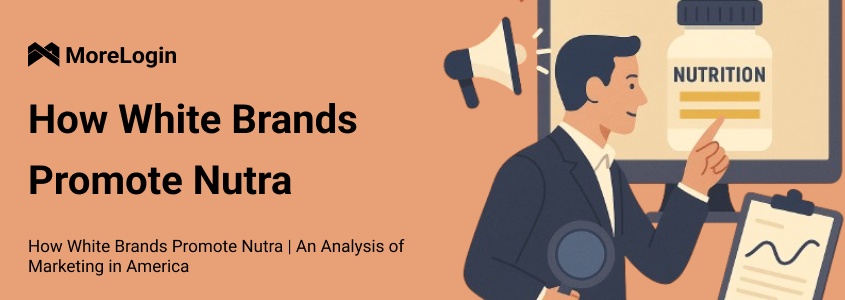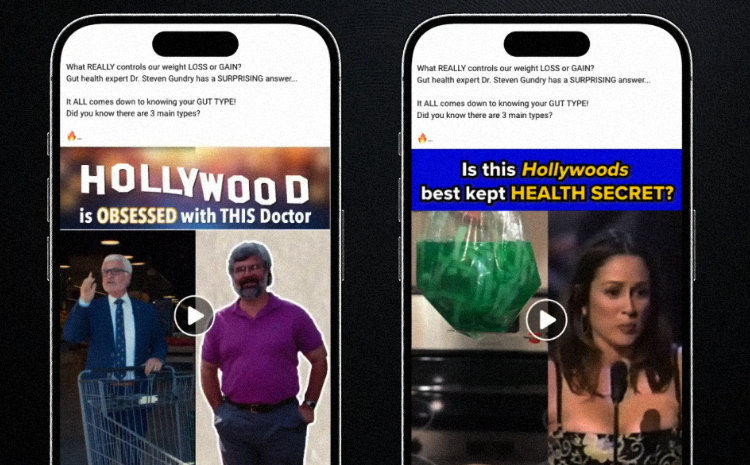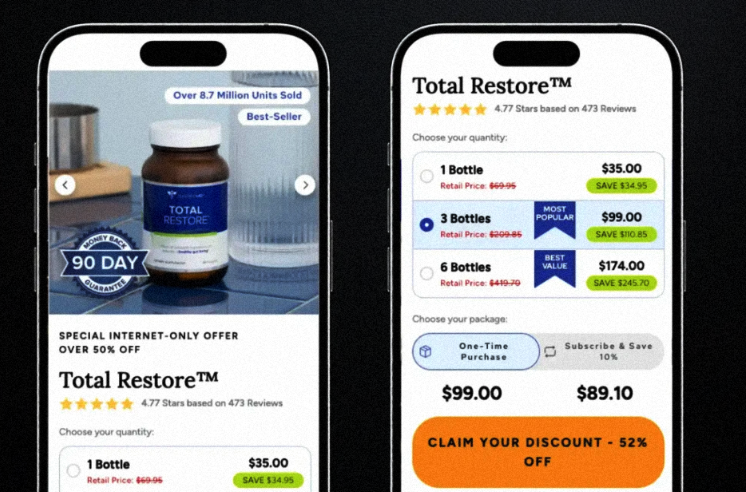
- Product

- Pricing
- Affiliate Program
- Use Cases
- Resource


The U.S. nutra market operates by its own rules: COD schemes, grey landers, and clickbait promises simply don’t work here. The market is dominated by full-scale DTC brands that build long-term relationships with their audience through content and well‑structured sales funnels.
For affiliate marketers and media buyers, this model is especially important: it proves that nutra can be marketed successfully in a white-hat format without manipulation or aggressive claims. High conversion rates are achieved through precise creative strategies, ongoing testing, and a carefully designed funnel.
Below is a breakdown of how these brands structure communication and sales—and the elements that make their strategy effective.
The creative approach avoids aggressive promises and shocking visuals. Everything revolves around trust, natural presentation angles, and constant testing.

The main creative type is recommendations from public personalities. When a known actor, athlete, or TV host shares their experience with a product, the audience perceives it less as an ad and more as trustworthy advice. This instantly builds credibility.
Another common angle uses teaser‑style creatives such as “the secret to Hollywood youth.” This blends emotional and cognitive triggers: viewers want to uncover the “secret,” and the Hollywood reference adds prestige and exclusivity. This combination consistently outperforms typical “before/after” visuals because it holds attention until the end and keeps the brand perception positive.
A third major format is role‑based UGC videos where one person films another, giving genuine compliments or discussing changes. These clips look like candid personal videos rather than staged ads. Because of this natural style, the creatives avoid “ad blindness” and drive stronger engagement. A key point: the brand fully abandoned static formats—only emotional, dynamic video creatives are used.
A defining feature is a dense testing grid. Each angle has 3–5 variations: different actors, locations, scripts, and hooks. One fan page can publish 30–35 creatives per day, and the brand operates multiple such pages. As a result, dozens of videos run simultaneously—each testing a specific emotional trigger. All this happens without shock tactics, fear, or pain points. The messaging focuses on what people genuinely want: real experiences, expertise, visual comfort, and trust.
All ads lead not to a standard landing page but to an intermediary page with a button “Take the quiz.” This additional step (tested via many A/B tests) filters out accidental clicks and keeps only genuinely interested users.
The quiz includes a few basic, non‑medical questions like:
– “How often do you feel tired after eating?”
– “Do you experience bloating?”
– “How would you rate your digestion?”
The purpose isn’t diagnosis—it’s to create a sense of personalization and guide users toward the mild realization that “yes, I do have some discomfort.” This emotional moment triggers the desire to “learn how to support the body.”
There are no loud claims like “eliminate symptoms” or “heal in 5 days.” Instead, the tone is calm and caring:
– “Check how your body is functioning.”
– “Learn how to support digestion.”
This reduces resistance and increases trust, especially among users sensitive to manipulation.
The extra click before the quiz increases engagement: once a user voluntarily confirms their intention, they are psychologically more involved.
Users can skip the quiz and go straight to the VSL, giving flexibility for impatient users while still keeping high conversion rates.
The video funnel runs 25–45 minutes, yet keeps viewers engaged almost to the end. It’s not a 10‑minute ad but a full narrative structured by storytelling rules.

An expert appears—usually a doctor or certified specialist—with degrees, credentials, and references to reputable institutions. Sometimes footage of well‑known figures is added, such as: “Tony Robbins also supports this approach.” This quickly builds trust and positions the speaker as reliable.
The narrative shifts to empathy:
– “It’s not your fault.”
– “This is how modern life works.”
The expert often shares a personal story (“I went through this too”). Then contrasts are introduced:
– “Conventional medicine doesn’t help.”
– “Big companies don’t care.”
And finally: “We found a solution.”
The VSL doesn’t rush. It patiently builds trust and only then introduces the product—maintaining high conversion even with long watch times.
The final step is the offer page, featuring product photos, a short description, and package options (1, 3, or 6 bottles). Below are ingredient details and effects—without miracle claims. A clear “Order” button and a 90‑day money‑back guarantee lower perceived risk.

All payments go through white‑hat processors (Shopify, PayPal), which signals legitimacy and security to Western users.
The design avoids aggressive banners, countdown timers, and pop‑ups. Instead, it resembles a clean e-commerce catalog—this visual clarity boosts trust.
The entire brand strategy revolves around the expert figure—the doctor or specialist who serves as the face, voice, and guarantor of the product. The funnel doesn’t just sell a supplement; it builds understanding, trust, and emotional resonance.
The team uses the MoreLogin browser for safe multi-account management and hypothesis testing across platforms, ensuring stable and secure operations during funnel optimization.
From a media buying perspective, the approach is ideal:
creatives and angles are constantly refreshed,
small CTA details and transitions are tested,
the team doesn’t rely on one winning ad but builds a scalable system.
The result is a sustainable brand that grows through long-term funnels instead of manipulative tactics—showing that nutra can be both white-hat and profitable.